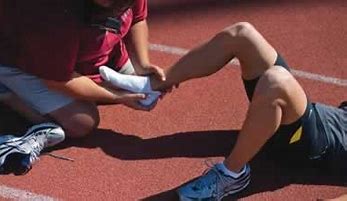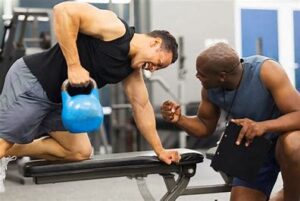Navigating the Recovery Journey with Expert Guidance
In the world of sports, injuries are an unfortunate but common reality. Whether you’re a weekend warrior in local leagues or an aspiring professional athlete, the road to recovery often requires more than rest and time. This is where the expertise of personal trainers becomes invaluable. In this article, we’ll explore how personal training can aid in the recovery and prevention of sports-related injuries, highlighting techniques that are making a difference in our local sports community.
Understanding Injury and Recovery
The first step in any recovery process is understanding the nature of the injury. Common sports injuries like sprained ankles, torn ligaments, and muscle strains each require a specific approach. Personal trainers, often with backgrounds in sports medicine or physical therapy, are adept at designing recovery programs tailored to these conditions. If you need assistance with Personal Training in New Braunfels, TX, call these professionals; they can surely assist you. By understanding the mechanics of the injury, they can create a regimen that not only rehabilitates but also minimizes the risk of re-injury.
The Role of Personal Trainers in Rehabilitation
Personal trainers play a crucial role in the rehabilitation process. Their expertise extends beyond general fitness; they are trained to understand the nuances of sports injuries and the complexities of the human body’s healing process. A key aspect of their role involves developing a personalized training plan that aligns with the athlete’s recovery goals and physical capabilities.
Tailored Exercise Programs
One of the primary techniques used by personal trainers in injury recovery is the development of tailored exercise programs. These are designed to gradually rebuild strength, improve flexibility, and enhance stability in the injured area. For instance, a trainer might incorporate low-impact exercises like swimming or cycling for someone recovering from a knee injury. As the athlete progresses, the trainer will adjust the program, introducing new exercises that challenge the body while ensuring safety.
Focus on Core Strength and Stability
Core strength and stability are fundamental in most sports injury recovery programs. Personal trainers often emphasize exercises that strengthen the core muscles, which can help support the injured area and prevent future injuries. Stability exercises, such as balance training, are also critical, especially for athletes recovering from ankle or knee injuries. These exercises not only aid in rehabilitation but also contribute to improving overall athletic performance.
Incorporating Flexibility and Mobility Work
Flexibility and mobility work are often overlooked aspects of sports injury recovery. Personal trainers understand the importance of these elements in restoring full range of motion and preventing stiffness. Techniques like dynamic stretching, yoga, or pilates can be integral parts of a recovery program, helping to maintain muscle elasticity and joint mobility.
Technology and Recovery
In today’s tech-driven world, personal trainers are increasingly incorporating technology into their recovery programs. Wearable devices can track an athlete’s progress, providing valuable data on aspects like range of motion, strength, and endurance. This data can then be used to refine and adjust the recovery program for optimal results.
Education and Preventative Strategies
Finally, personal trainers provide invaluable education on injury prevention. By teaching proper techniques, posture, and body mechanics, they equip athletes with the knowledge to avoid future injuries. This preventative approach is as vital as the recovery process itself, ensuring athletes can continue to participate in the sports they love with reduced risk.
Conclusion: A Partner in Recovery
Recovering from a sports injury can be a challenging journey, but it doesn’t have to be a solo endeavor. Personal trainers offer more than just fitness guidance; they provide a comprehensive approach to rehabilitation, combining tailored exercises, technology, and education. In our local sports community, these trainers are not just coaches; they are partners in the journey towards healing and stronger, more resilient athleticism. As we continue to celebrate the triumphs and navigate the challenges of sports, the role of personal trainers in injury recovery remains an essential and empowering aspect of athletic success.



